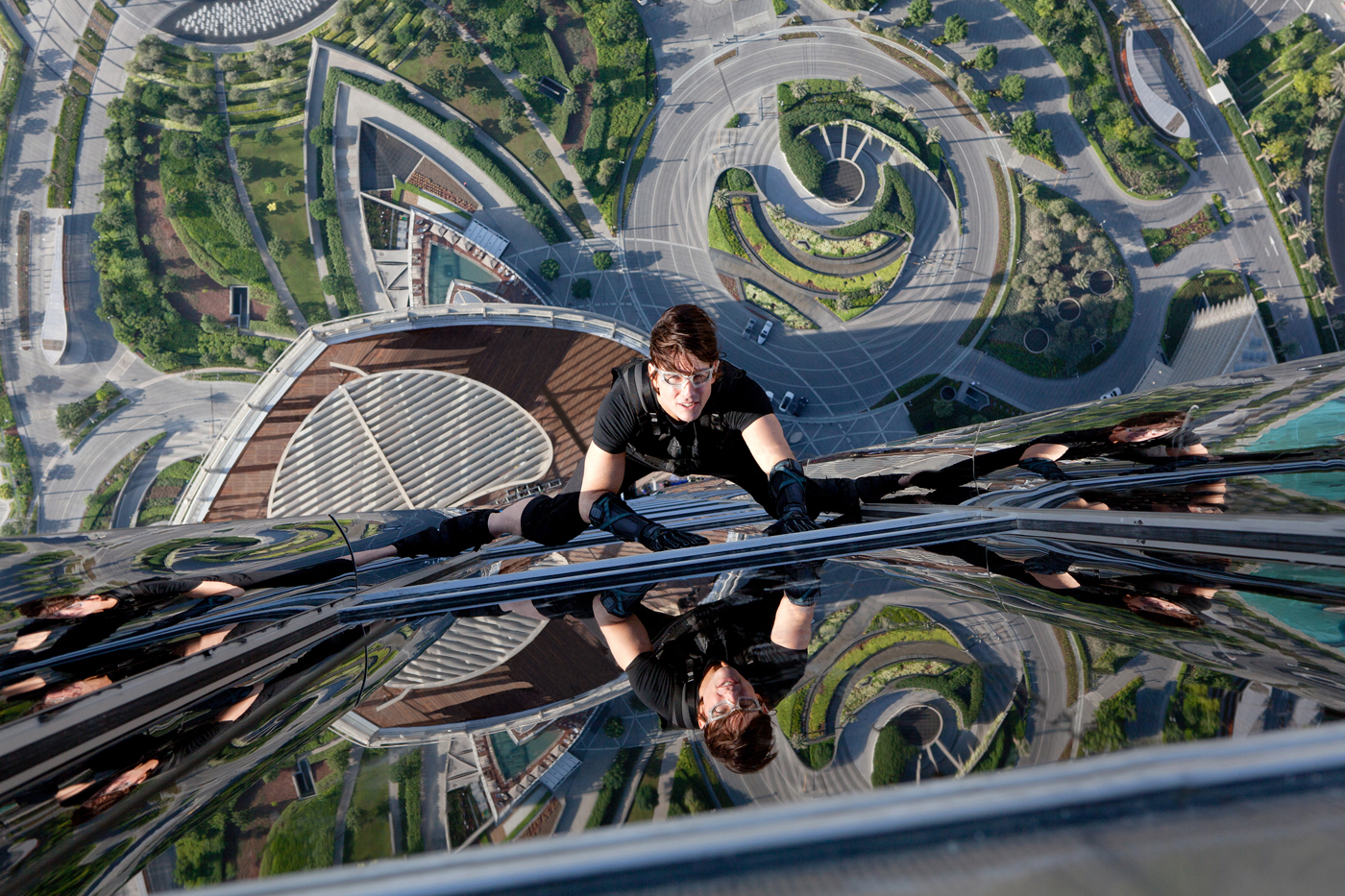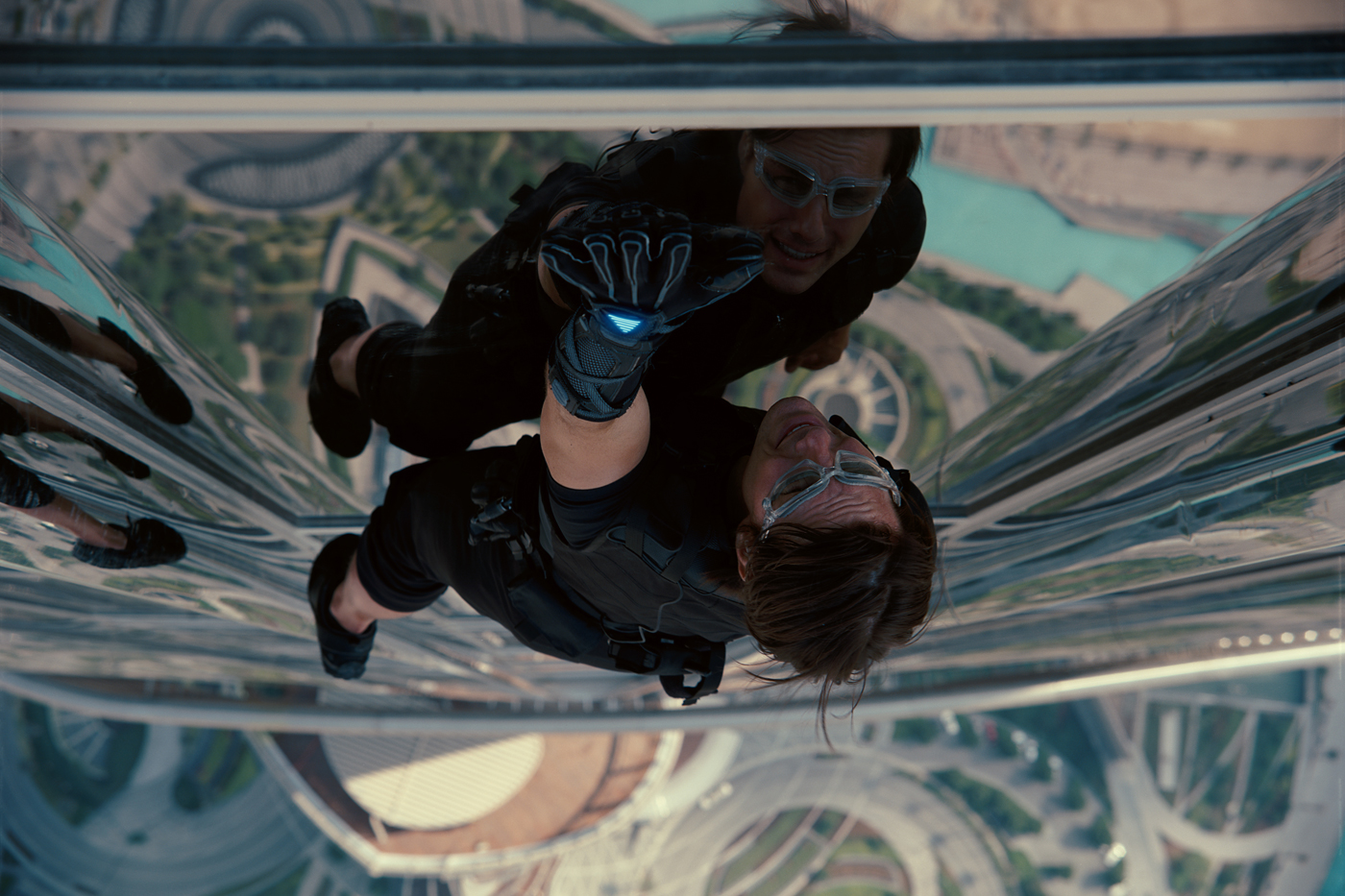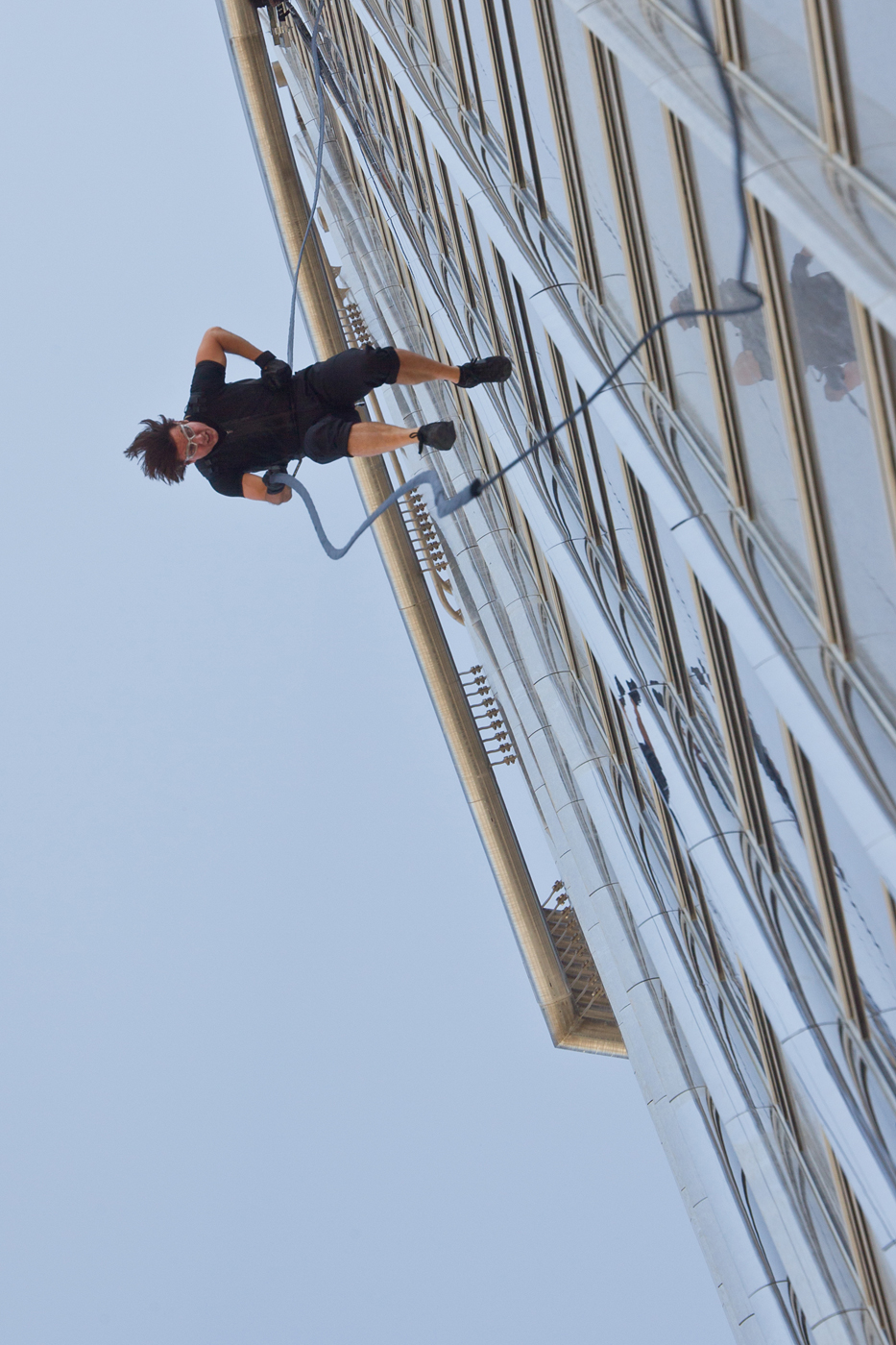After explaining his work on CAPTAIN AMERICA, Dave Morley is back on The Art of VFX. In this new interview, he tells us his work on MISSION IMPOSSIBLE: GHOST PROTOCOL. This film is the second collaboration of Fuel VFX with ILM.
How did Fuel VFX got involved on this show?
We met with the team at ILM a few years back to speak to them about the potential of doing outsourcing work for them. Our first job in this capacity was COWBOYS & ALIENS, followed quickly with GHOST PROTOCOL.
How was the collaboration with director Brad Bird?
We dealt only with the in house VFX team at ILM.
How was the collaboration with Production VFX Supervisor John Knoll?
John was great to work with. What was important for him was making sure we maintained the integrity of the original negative and making sure any CG being integrated sat within the latitude of the neg. Creatively he was very open to ideas and solutions we had for shots which made for a fun journey. Lindy DeQuatrro was also a VFX supervisor on the show that we dealt with a lot. We had the same great collaborative relationship with her as well.
What have you done on this show?
Our main body of work was the Burj Tower sequence. As Tom did a lot of the stunts in camera, either on stage or on the actual building, we had quite a bit of wire/rig removal and digital plate extension of set photography. We also did smashing glass for Tom breaking into the server room, and the Mask Maker shots.
We also created the Budapest establishers of the clock tower, train station and adjacent building roof and did some bluescreen shots of a fight sequence in a train.
How did you create the establishing shots of Budapest?
We created a full digital clock tower that buried into the plate photography. We also changed the roof of the train station as well as the roof top of the adjacent building that the actors burst out of.
It was tracked in Equalizer, modeling was done as a combination of Maya and Mudbox. All comp was in Nuke.
Can you tell us more about the CG buildings in those shots?
We based the clock tower from several reference images that we sourced. They wanted it roughly based on a clock tower that existed, but we embellished it to be a bit more sympathetic to the surrounding buildings in the plate. We had quite a bit of creative freedom on designing the tower, so we went to town with tonnes of detail including statues, gargoyles etc…
What did you received from the production as background plates for the train fight?
The BG plates were shot on RED by ILM I believe. They matched the angles well, so it was just really a technical comp exercise to make it sit well.
How did you create the mask maker?
The mask maker was a combination of Houdini-driven animation and skin with rendering in Maya with Mental Ray. The particles of the plastic being shaved off was done as a Maya particles sim. We had perfect on-set reference of a real practical mask that was built. This became the basis of the look development to match to. We were able to control the rate and position of the face changing so we could art direct exactly what part of the face we needed to read in order to sell the shot.
Can you tell us more about the impressive sequence with Ethan Hunt climbing the Burj Tower?
This was a huge challenge. The tower is essentially a mirror and at every intersection, a glass pane was met by a “vortex generator” which is a fin-shaped rib that runs the entire vertical length of the building. This was also essentially a mirror, so what that meant was that for every wire you see, you saw it reflecting on at least one other plane. Sometimes that wire was reflected up to 4 times. This is then complicated even more by the fact that as it’s a mirror you couldn’t just grab a still, paint out the wire and track it back in, because the parallax of the BG reflection in the face moved independently. So we had to render CG portions of the building to replace wires. By far our most challenging shot was one of Ethan climbing up the building with the camera looking down and he climbs towards us. This shot was in IMAX at 4k and took a team of 4 compositors on and off about 3 months to clean it up.
Sometimes Ethan was shot on a set piece that we had to digitally extend the tower above and below him or beyond where he was hanging. After dropping his cutter, Ethan is forced to break the window in order to get into the server room. We had to build the continuity and journey of him kicking the glass and the cracks appearing through to when he finally breaks through. The break through shot was enhancing the in-camera breakaway glass with augmented CG glass that was simmed in Maya as a rigid body with a rotomatted Ethan.
All the BGs that we needed to add were supplied to us as a 18k cyc generated and painted from ILM. We had to augment the frame by adding digital cars to give the city of Dubai some life. We were supplied two cycs for the floor where Ethan leaves the room and one for the server room.
The layouts for the shots were all done relative to each other so we could make sure we were being correct geographically across the sequence. The cameras were passed off to the Nuke team who dropped them into the shots for the rendering of the cyc on a sphere.
Was Tom Cruise really doing the climbing? How was filmed those amazing shots?
Yes!! Without a doubt these were truly amazing stunts for anyone to do, let alone the main actor. Luckily they were able to remove windows from the building, allowing them to rig either cameras or rope and pulley rigs outside the building.
Did you do some face replacements on specific shots?
All Tom!!! Ironically the “easier” looking shots of Tom just hanging outside a window kicking it was the set piece, but all the OMG shots of him either running down the side of the building climbing up, swinging of the side, was all Tom.
How did you create the shot in which Ethan Hunt entering the server room? How did you create the background?
The glass was done in Maya using DMM, we rotomatted a proxy of Tom so we had his movements tracked spatially. This animation drove the simulation, with other proxy bits of geo being used as collision objects. ie, floor, servers etc… The cyc, was as above.
Can you tell us more the big jump of Ethan Hunt going back on his room?
This was an ILM shot.
What was the biggest challenge on this project and how did you achieve it?
Biggest challenge would have been the wire removals, dealing with reflections and inter-reflections meant for some tricky work that needed a lot of CG to help patch. It wasn’t “hard” it was just very labour intensive and time consuming, but well worth the methodology on how they shot it. The final shots on a big screen do make you skip a beat.
Was there a shot or a sequence that prevented you from sleep?
When we first started seeing the plates at 4k it was a little intimidating in the realization that what we’d been seeing on the quicktime was about 40% of what was actually there. That made for some interesting scheduling challenges!
What do you keep from this experience?
That it’s sometimes easier to take the hard road, especially realizing it early enough and committing to it.
How long have you worked on this film?
April to October 2011.
How many shots have you done?
92 shots.
What was the size of your team?
About 50.
What is your next project?
We currently have in the pipeline, Ridley Scott’s PROMETHEUS and Marvel’s THE AVENGERS.
What are the four movies that gave you the passion for cinema?
Way too hard to answer. But the filmmakers that inspire/d me the most would be Alfred Hitchcock, David Fincher and Steven Spielberg.
A big thanks for your time.
// WANT TO KNOW MORE?
– Fuel VFX: Dedicated Page about MISSION IMPOSSIBLE: GHOST PROTOCOL on Fuel VFX website.
© Vincent Frei – The Art of VFX – 2012









